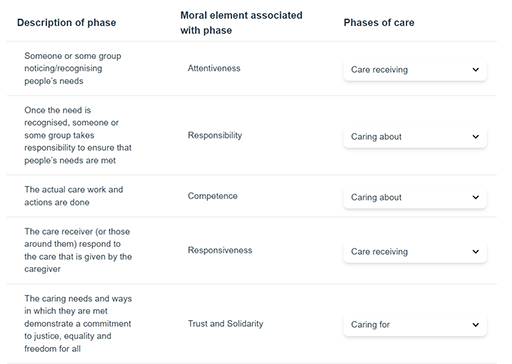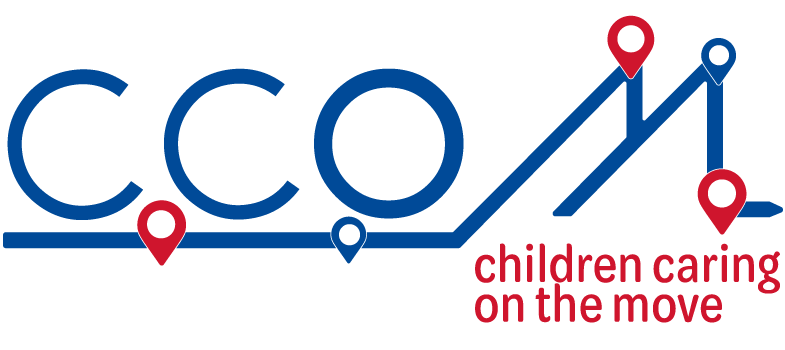2.1: Different approaches to care
Research literature suggests that we can broadly understand ‘care’ to include both practical and emotional support that we undertake on behalf of other(s). Care involves the things that we do, our practices, and the feelings, disposition or values towards those actions (Tronto, 1993). Another way to think about this is to see ‘care’ as ‘caring for’ (tending to someone else’s needs) and ‘caring about’ (emotional concern for another). It is possible to ‘care for’ someone without really ‘caring about’ them. There is a tendency to think of care as flowing in one direction – an active caregiver and a cared-for recipient. However, there are many examples of care relationships that are reciprocal, where we are both the givers of care and the receivers of care. When we thinking of caring for the elderly, disabled, young people, friends or workmates, it is easy to see how care might come in different forms, involve different exchanges of care over a long period of time, as well as be open to power inequalities (Bowlby, 2012).
The care literature also makes a distinction between ‘formal’ and ‘informal’ types of care. These somewhat blurry distinctions came about because some carers see what they do as ‘work’ whilst others see it as something more reciprocal and loving (Milligan and Wiles, 2010). Formal care is usually paid and formally organised. Informal care is usually unpaid but highly diverse and may include anything from everyday acts of concern to sustained care over time. A key point is that the boundaries between formal and informal care are blurred. Formal care might become extended into an informal relationship over time. Your relationships with the young people in your care may be fleeting but there may be others that have endured over time.
One widely well-known approach to care is the ‘ethics of care’ framework, which suggests that care involves taking a social, moral and political position (Fisher and Tronto, 1990; Tronto, 1993). For example, society decides who gets to be cared for and how, what institutional rules and resources might govern that care and the related practices. The Covid-19 pandemic offered a good example of how the social, moral and political decision-making connect to each other. The decision to release hospitalised elderly who were testing positive for Covid into care homes was a political decision with significant social and moral implications. Moral decisions may be based on limited resources and geographical inequities. Similarly, research suggests that political decision-making made it ethically challenging for social workers to operate during the Covid pandemic (Banks et al., 2020)
Let’s look more closely at the key features of the ‘ethics of care’ framework.
 Activity 2.2: Phases and moral elements of care
Activity 2.2: Phases and moral elements of care
Below are the phases of care developed by Fisher and Tronto (1990, pp. 40, cited in Tronto (2013 pp. 22)) and the five moral elements of care (see also Collett et al., 2018).
Link the five moral elements to their associated phase and explanations element.
- Trust and solidarity
- Responsibility
- Competence
- Responsiveness
- Attentiveness
Click ‘View interactive version’ to get started with the activity.

Discussion
What did you think about these phases of care? Do you recognise these within your own practice? One of the criticisms of this model is that it doesn’t include some of the elements associated with informal caring such as reciprocity. In many care relationships (such as friendships), care may be reciprocal, even when it is unequal in power. Care may change over time. Care is ‘embodied’ which means that there is some form of ‘co-presence’ through physical contact or non-verbal communication (Bowlby, 2012).
2: What does it mean to ‘care’?

